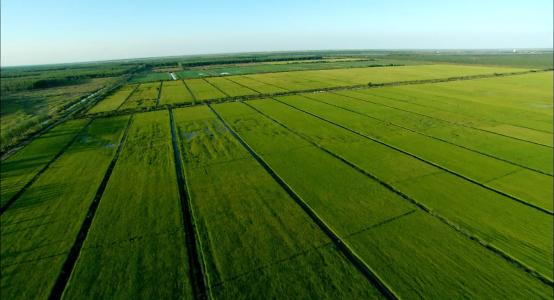my country is a major agricultural country, and the advantages of traditional agriculture in the international market mainly rely on abundant natural resources and low labor costs. With the development of high technologies such as the Internet of Things, my country’s traditional agriculture is accelerating its transformation into modern agriculture, and smart agriculture will become the future development trend of modern agriculture. To build smart agriculture, we must rely on advanced science and technology such as the Internet of Things to vigorously promote agricultural scientific and technological innovation, research multifunctional, intelligent agricultural scientific and technological achievements that can promote the development of agricultural productivity, and promptly transform scientific and technological achievements into agricultural production tools. The required technical products can be used in the entire process of agricultural production.
Интернет вещей
The concept of the Internet of Things (IOT) was proposed in 1999. The ITU Internet Report issued by the International Telecommunication Union (ITU) in 2005 defined the Internet of Things as follows: through QR code reading equipment, Information sensing equipment such as radio frequency identification (RFID) devices, infrared sensors, global positioning systems and laser scanners, according to agreed protocols, connect any item to the Internet for information exchange and communication to achieve intelligent identification and positioning , a network for tracking, monitoring and management [1]. Since August 2009, when Premier Wen Jiabao visited the Wuxi High-tech Micro-Nano Sensor Network Engineering Technology Research and Development Center (National Sensor Network Engineering Center, Wuxi Internet of Things Industry Research Institute) of the Chinese Academy of Sciences, he mentioned that “China’s sensor information center should be established as soon as possible or Since then, the Internet of Things has been officially listed as one of my country’s five emerging strategic industries.

The architecture of the Internet of Things is shown in Figure 1. It can be divided into 3 layers: perception layer, network layer and application layer. The perception layer is equivalent to the skin and facial features of the human body, and is mainly used to identify objects. The information collected includes QR code tags and readers, RFID tags and readers, cameras, sensors and sensor networks, etc. The network layer is equivalent to the nerve center and brain of the human body. It is mainly used for information transmission and processing, including the integration network of communication and the Internet, the Internet of Things management center, the Internet of Things information center and the intelligent processing center. The application layer is equivalent to human social division of labor, combined with industry needs to achieve widespread intelligence, which is a deep integration of the Internet of Things and industry-specific technologies.
At present, IoT technology has been widely used in fields such as smart agriculture, smart cities, smart homes, smart medical care, smart transportation, and smart logistics.
Умное сельское хозяйство
Smart agriculture is a concept that has emerged recently, and there is currently no generally accepted definition at home and abroad. Professor Li Daoliang of China Agricultural University believes that: Smart agriculture aims to utilize various agricultural resources with the highest efficiency, minimize agricultural costs and energy consumption, reduce damage to the agricultural ecological environment, and achieve the overall optimization of the agricultural system. It focuses on the entire agricultural industry. , characterized by the ubiquitous intelligence of the whole process, supported by comprehensive perception, reliable transmission and intelligent processing and other Internet of Things technologies, and based on automated production, optimal control, intelligent management, systematic logistics and electronic transactions. A modern agricultural development model and form that is mainly high-yielding, efficient, low-consumption, high-quality, ecological and safe. Researcher Zhou Guomin of the Chinese Academy of Agricultural Sciences believes that: Smart agriculture is the full use of information technology, including more thorough sensing technology, broader interconnection technology and deeper intelligent technology, to make the operation of the agricultural system more effective and smarter, so as to make the agricultural system operate more efficiently and intelligently. The agricultural system achieves the goals of strong competitiveness of agricultural products, sustainable agricultural development, effective utilization of agricultural resources and environmental protection.
The main contents of smart agriculture include:
1) Collect parameters such as temperature, humidity, light, and CO2 concentration at the agricultural production site in real time through various wireless sensors, use video surveillance equipment to obtain information such as the growth status of crops, and remotely monitor the agricultural production environment. At the same time, the collected parameters and acquired information After digital conversion and summary, it is uploaded to the relevant agricultural intelligent management system in real time via the transmission network; the system accurately remotely controls agricultural facilities to automatically turn on or off according to various indicators of crop growth (such as remote control of water-saving irrigation, energy-saving and oxygenation). etc.) to realize intelligent agricultural production.
2) Use RFID electronic tags to build a safety traceability system for agricultural products, strengthen data sharing and transparent management of the entire process from agricultural production, processing, transportation to sales, etc., to achieve full-process safety traceability of agricultural products, promote brand building of agricultural products, and increase the added value of agricultural products.
3) Establish a wireless sensor network, develop an intelligent agricultural application system, conduct real-time collection and analysis of air, soil, crop growth status and other data, systematically plan the distribution of agricultural industrial parks, rationally select crop varieties, online disease identification and treatment, and scientific guidance Ecological crop rotation. In the future modern agricultural production process, the application of smart agriculture will be more extensive, and farmers will choose appropriate intelligent agricultural production systems to increase agricultural product output and increase profits.
Keywords: data transmission terminal